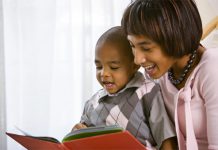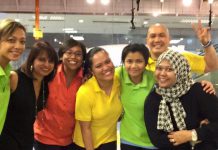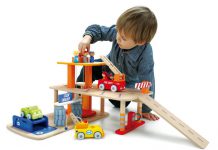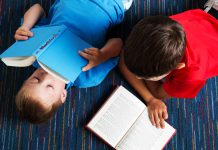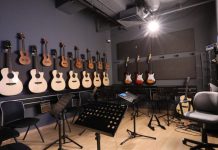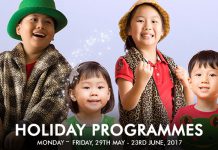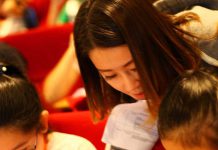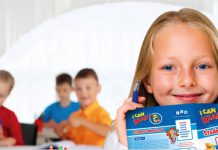Believe it or not, your child’s literacy development started the day she was born. Listening to you talk, sing and read to her introduced her to the sounds and rhythm of language.
It’s never too early to introduce your child to the joy of reading. Cathy West discusses the different approaches to reading.
With literally hundreds of commercial schemes on the market which claim to help children learn to read, it’s difficult to know which to pick. All claim to be effective and cite supporting evidence to validate them – so what choices do we make?
Your child will formally learn to read when she progresses through kindergarten or starts school. As a parent, how do you help this reading development?
Research has long agreed that children benefit greatly from being talked to and read to aloud from a very young age.
What Is Reading?
According to experts, reading is a purposeful thinking act. It can be for enjoyment, to understand instructions, plan a holiday or anything that brings meaning to text.
The ultimate goal of reading instruction is to enable children to understand what they read.
There are 3 main schools of thought :
1 Phonics :
first teaches children to recognise the sounds of individual letters, blending letters such as “sh”, “th” and “ee” and then building up to blending these sounds together to achieve full pronunciation of whole words. Thus, the beginning reader learns the connections between the approximately 44 sounds of spoken English or phonemes, and the 26 letters of the alphabet. This nurtures accurate and rapid word reading skills as a child understands that written spellings systematically represent the phonemes of spoken words.
A phonics approach is often referred to as a ‘bottom–up’ view of reading. Phonics advocates argue that learning to read is ‘unnatural’ and that most children, if they are to read successfully, need a structured and systematic phonics instruction. This approach is criticised for its limited vision of what reading is, for its lack of emphasis on comprehension of text, and is questioned if it can create life-long readers. It is argued that phonics down plays reader input and with excessive amount of segmentation, children are not exposed to reading in a natural state, and are therefore less likely to develop a love for reading.
2 Whole Language :
The philosophy underlying the Whole Language approach is that reading is a natural process, much like learning to speak, and that children exposed to a great deal of authentic and connected text will naturally become literate without much in the way of explicit instruction in the rules and conventions of printed text.Whole language is described as ‘real’ language, where educators view reading as essentially a process of creating meanings. It is not seen as a program to be taught, but more language to be lived.
Mem Fox, author of Reading Magic, states that “Whole Language simply means reading real books and writing real texts for real reasons.” The idea that reading and writing should be taught incidentally rather than explicitly is a key feature of the Whole Language approach along with immersing children in a language rich environment.
The Whole Language approach includes phonics, but at the end of the journey, not at the beginning, “…because the phonics comes at the end of the journey it can be related to something real, that the kids know about, that they enjoy,’’ says Mem Fox. It is a ‘top down’ approach and stresses that meaning is paramount and values context rather than code breaking as in word recognition.
This approach is criticised for not looking at the alphabetic system and an over-reliance on context.
3 Word Recognition:
This approach teaches children to recognise a set of ‘sight words’ common in many texts. If a child has learned to recognize a word without learning to decode the word, then that word is a “sight word” for that child.
When this method was in vogue more than 40 years ago, it was called the ‘look and say’ method: children looked at individual, disconnected words on charts or cards and chanted them after the teacher.
Critics state that this method is flawed as there is a limit as to how many words children can memorise. While most competent readers have a reading vocabulary of 50,000 to 75,000, children who memorise words as wholes are only capable of learning a maximum of about 5,000 words in isolation.
Word recognition advocates say it builds more fluent readers as compared to phonics as children do not have to blend sounds to build words.
A Balanced Approach
A balanced approach is perceived by some as the most effective way to teach reading. It combines a systematic code-based instruction in phonics with context-based prediction, using sentence structure and knowledge of the subject that young readers bring to print.
A consensus of opinion is appearing that reading is neither top down nor bottom-up, that phonics alone is not sufficient to teach a child to read effectively and that a skilled reader requires fast word identification and understanding of text. A balanced view is seen as opening the way to teaching children to read and write, bringing into play phonological-graphological, grammatical and semantic information based on the needs of a child.
This approach is criticised as it is stated that people do not agree what the term “balanced approach” means. A balanced approach could be generically described as “mixing some Phonics with Whole Language,” but how this is accomplished in any particular classroom is still unclear.
Which Approach Is Best?
Dr Sebastian Wren, a reading researcher, states that teachers are now being encouraged to look beyond the restrictions of the traditional approaches to reading instruction, and to use research evidence to gain an understanding of the reading process that allows them to make clearer and more purposeful instructional decisions.
He believes that educators should not be asking whether a lesson is Phonics-based or Whole Language-based, they should be asking whether a lesson is going to help a specific beginning reader to learn to read.
The debate as to which approach to reading is best has been continuing for decades and is still a hot topic of conversation amongst educationalists and researchers alike. Phonics advocates openly condemn the Whole Language approach and vice versa.
So What Should We Do As Parents?
There is a clear and well-documented relationship between children’s preparation in the home, and their ability to benefit from standard literacy practices in school.
Children first learn to listen and speak, then use these and other skills to explore reading and writing. Like child development in general, language development is inter-related. Children who have many opportunities to listen and speak tend to become skilled readers and writers. Children who are read to often, learn to love reading and become better listeners, speakers, and writers.
Ultimately, children’s ability to understand what they are reading is inextricably linked to their background knowledge. Very young children who are provided opportunities to learn, think, and talk about new areas of knowledge will gain much from the reading process. With understanding comes the clear desire to read more and to read frequently, ensuring that reading practice takes place for a real purpose.
Regardless of the preferred theory of teaching children to read in schools, it is clear that all approaches agree that the development of critical early reading-related skills are fostered when children are read to at home in a meaningful and enjoyable way. This is where a love for reading evolves.
READING SYSTEMS USED IN SINGAPORE PRESCHOOLS
Jolly Phonics is a well recognised and uses synthetic phonics in a multi-sensory way. It’s available at September 21
(www.september21.com.sg).
Letterland combines phonics teaching with storytelling using phonics fables and anecdotes. Get it at Tumble Tots
(www.tumbletots.com.sg).
Zoo Phonics teaches the alphabet using a cast of animal characters and sounds, and body movements. Find out more at www.zoo-phonics.com.sg.



